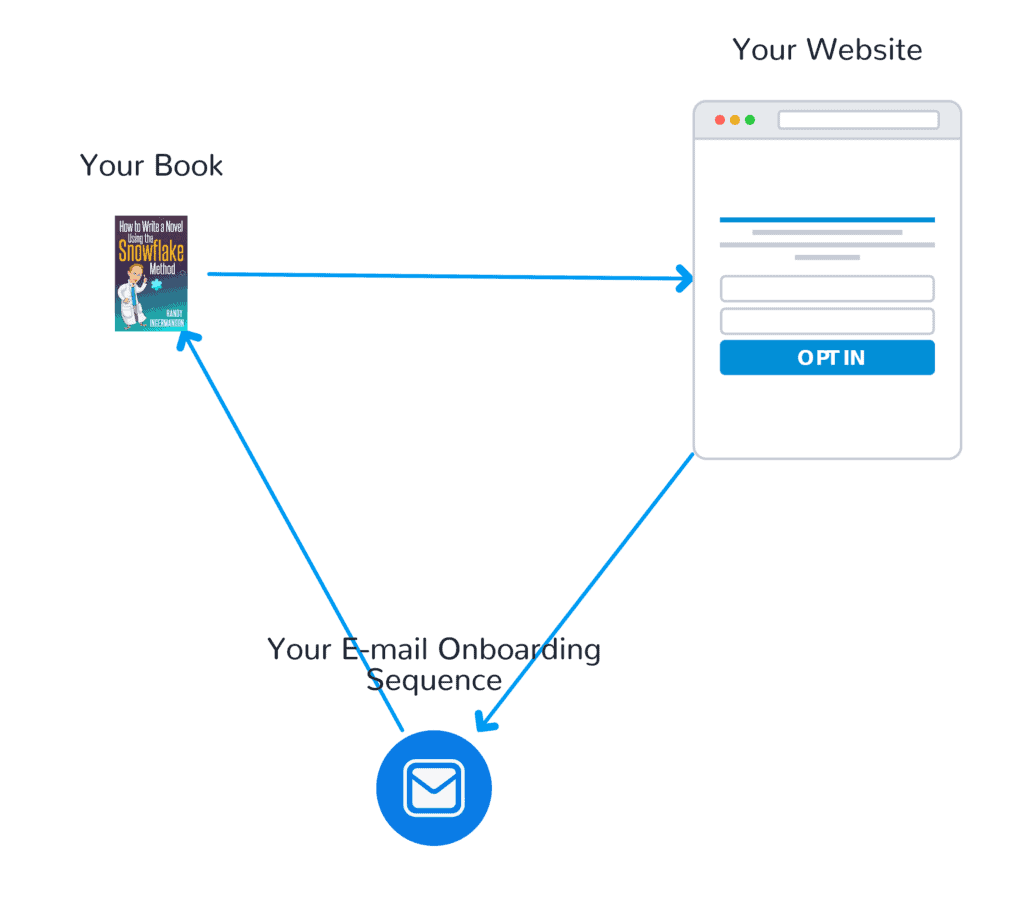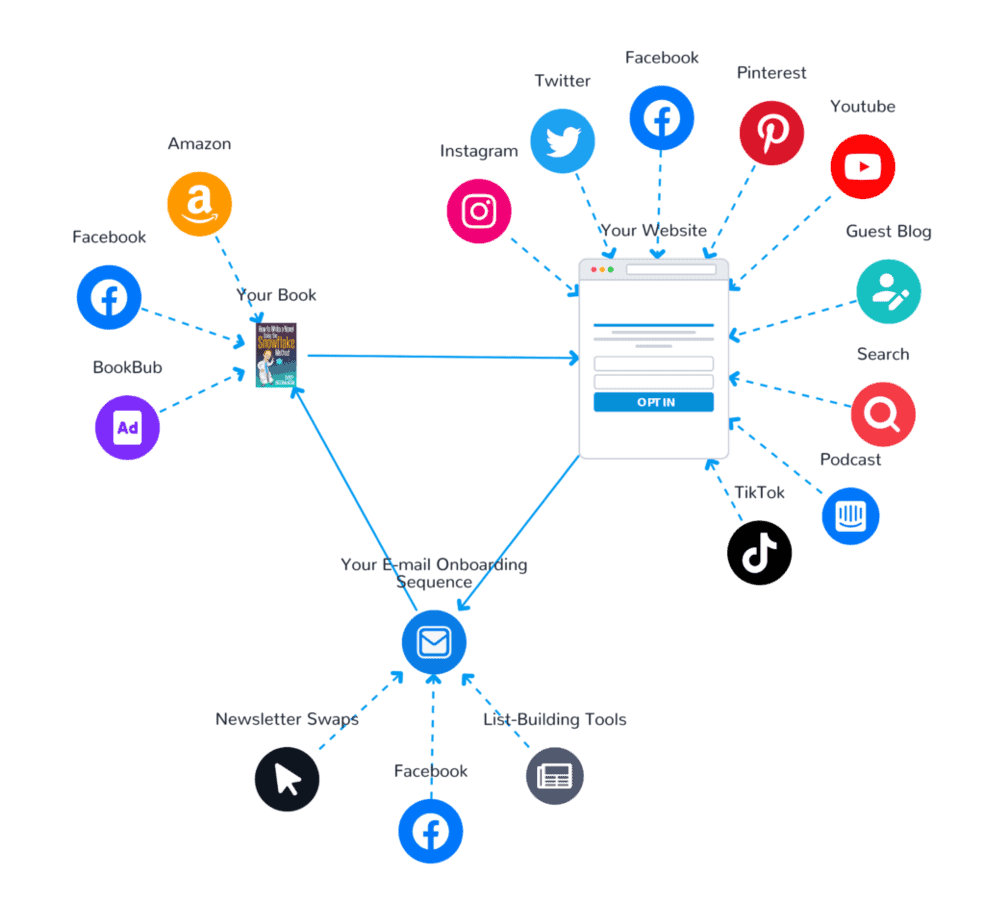Marketing books is hard. There are many dozens of things authors are “supposed” to be doing to increase their sales. The problem is that everything takes time, and authors are busy people.
It’s natural for an author to ask what their core marketing machine should look like. If you reduce things to the bare essentials, what would that be?
Here’s my opinion. The core marketing machine for an author should take the form of a “Virtuous Cycle” with three basic parts:
- Your books send your fans to your website.
- Your website invites your fans to sign up for your e-mail list.
- Your e-mail list onboarding sequence promotes all your books.
This is called a “Virtuous Cycle” because each part of it feeds into the next, like this graphic:
But Where’s the Beginning?
You might ask, “which of these is the beginning?” That is, where do your fans get into this Virtuous Cycle?
The answer is that they might join it anywhere:
- They might happen onto one of your books in a store and discover that they like your writing.
- Or they might chance across your website in one of the thousand ways somebody can come to a website.
- Or they might join your e-mail list in one of many common ways.
But no matter how they enter the Virtuous Cycle, they keep going through until they’ve done it all. They’ve visited your website, they’ve joined your e-mail list, and they’ve read most or all of your books.
Why This Matters in the Short Term
Once you’ve built your Virtuous Cycle, you can then expand on it in many different ways. Each way will inject new fans into the Virtuous Cycle at some point:
- You can advertise your books directly using Amazon ads or Facebook ads or BookBub ads or any of the major deal sites.
- You can focus on bringing in traffic to your website using search-engine optimization or ads on Facebook or Google or interviews on blogs or podcasts or many other ways.
- You can focus on building your e-mail list using Facebook ads or joint author giveaways or many other list-building methods.
Each of these extensions to your marketing engine may or may not be cost-effective in the short-term. That is, running paid ads to promote one book may be a money-loser for that one book. But if it brings more readers to your website and then they sign up for your e-mail list and then they buy all your other books, then it’s a win in the long-term. And if the ads don’t work, you can stop them at any time, and your Virtuous Cycle still keeps working.
But the important thing is that you can now experiment on all those dozens of marketing methods that authors are “supposed” to do. Each of them will theoretically inject new fans into your Virtuous Cycle at some point. Each of them may or may not be cost-effective. Each of them can be turned on or off at any time, and the core marketing machine still just works.
Why This Matters in the Long Term
In the long term, you will continue to write books on a sustainable schedule. Maybe you can write one book per year. Or three. Or ten.
It’s up to you to find a schedule that you can keep at for the long haul.
If you’ve built your core marketing machine as a Virtuous Cycle, then every time you launch a book, here’s what will happen:
- You’ll send several e-mails out to your True Fans, who will generate a big spike in sales during your Launch Week.
- This will drive your book up the bestseller charts in its various categories, bringing it to the attention of readers who never heard of you before.
- These new readers will now enter your Virtuous Cycle and grow your e-mail newsletter fan base.
- They’ll discover all your other books, and those will all see a surge in sales.
So over time, your set of True Fans will grow and grow. And each book launch will do a bit better than the one before. And in between launches, your growing backlist of books will attract new readers, so your fan base will grow faster and faster.
The mathematical term for what happens when you have a working Virtuous Cycle is “exponential growth.” If that sounds awesome to you, it is. Exponential growth is how all successful products become breakout big winners.
How to Take Action When You’re Busy
What this means for a busy, overworked author is this. If you feel overwhelmed with all the marketing you’re doing or all the marketing you could be doing, then focus on your core marketing machine.
Create your Virtuous Cycle first. Build your website and hook it up to your e-mail newsletter signup. Get your onboarding sequence written for your e-mail newsletter, and use it to promote your books. Make sure all your books give your readers an incentive to go to your website to sign up for your e-mail newsletter.
Once your Virtuous Cycle is in place, you can afford to try other things—various kinds of paid ads or search engine optimization or social media or whatever you want to try.
Each of those is an experiment—an optional way to inject True Fans into your Virtuous Cycle. If they work, great! If they don’t, abandon them and try something else.
What you never want to do is abandon your Virtuous Cycle. Like diamonds, your Virtuous Cycle is forever.


Difference between a blog post and newsletter. My website sends blog post to those who sign up